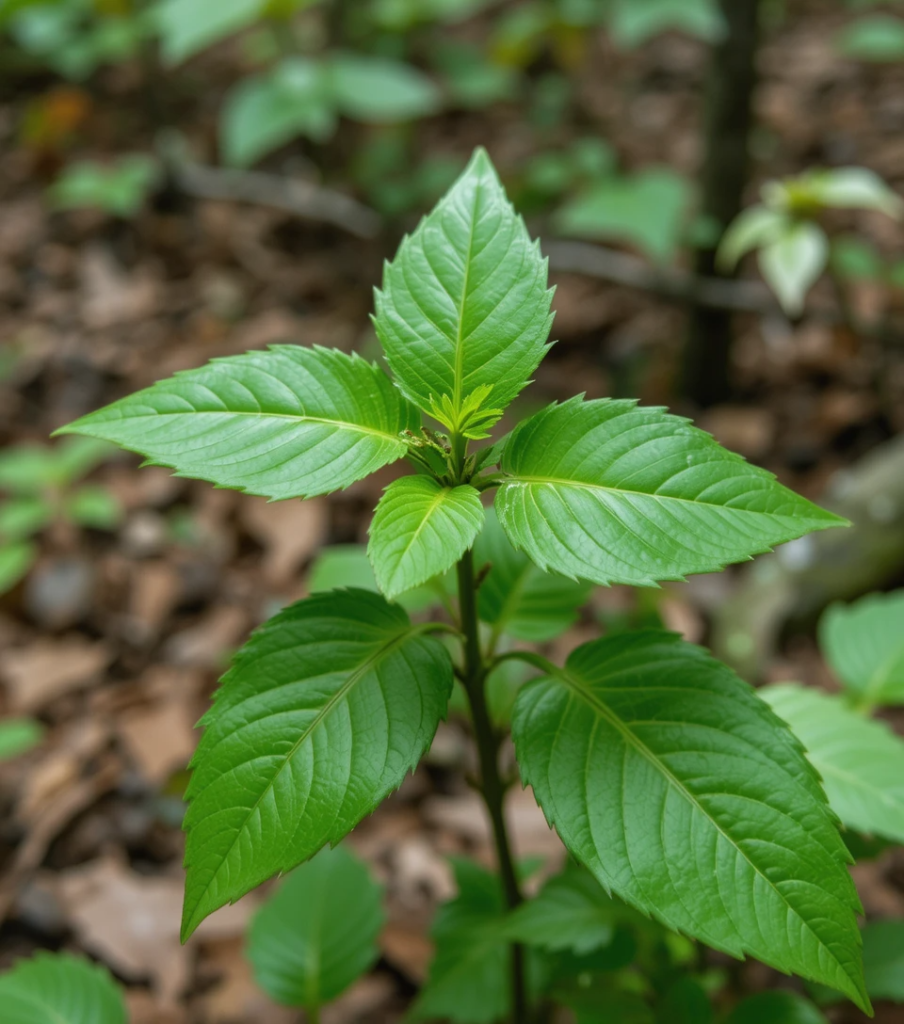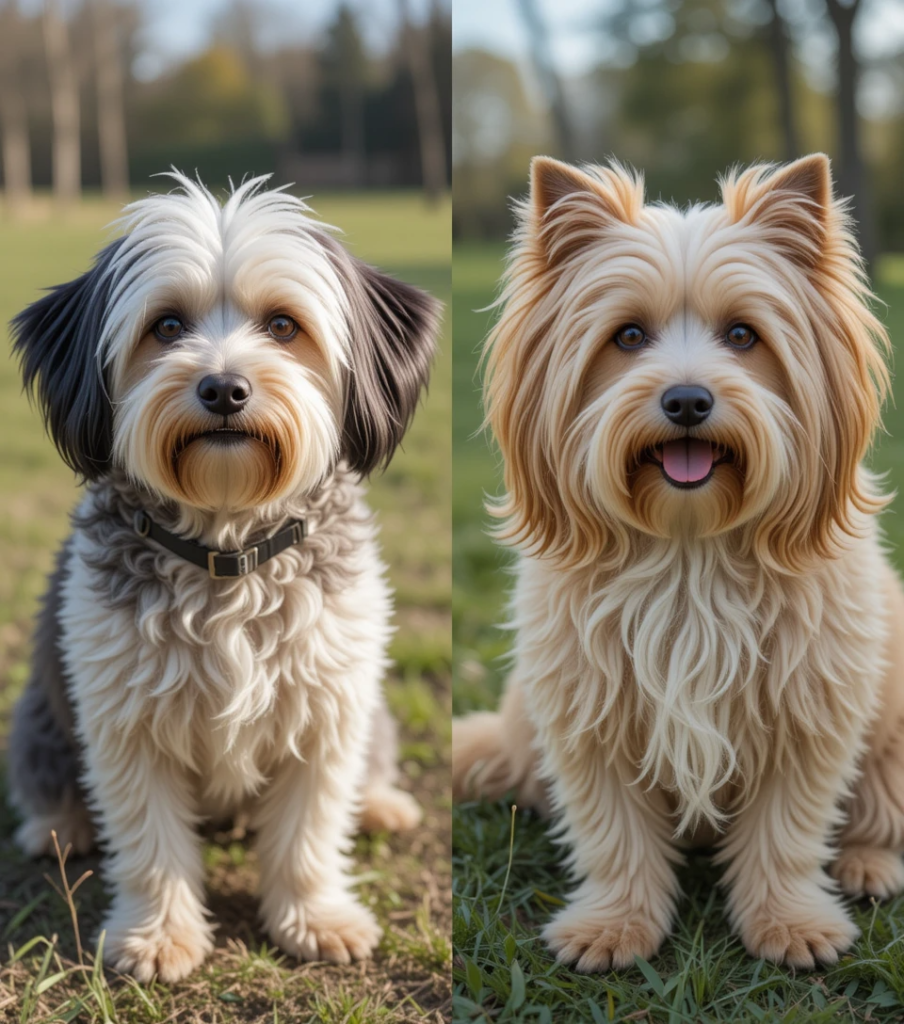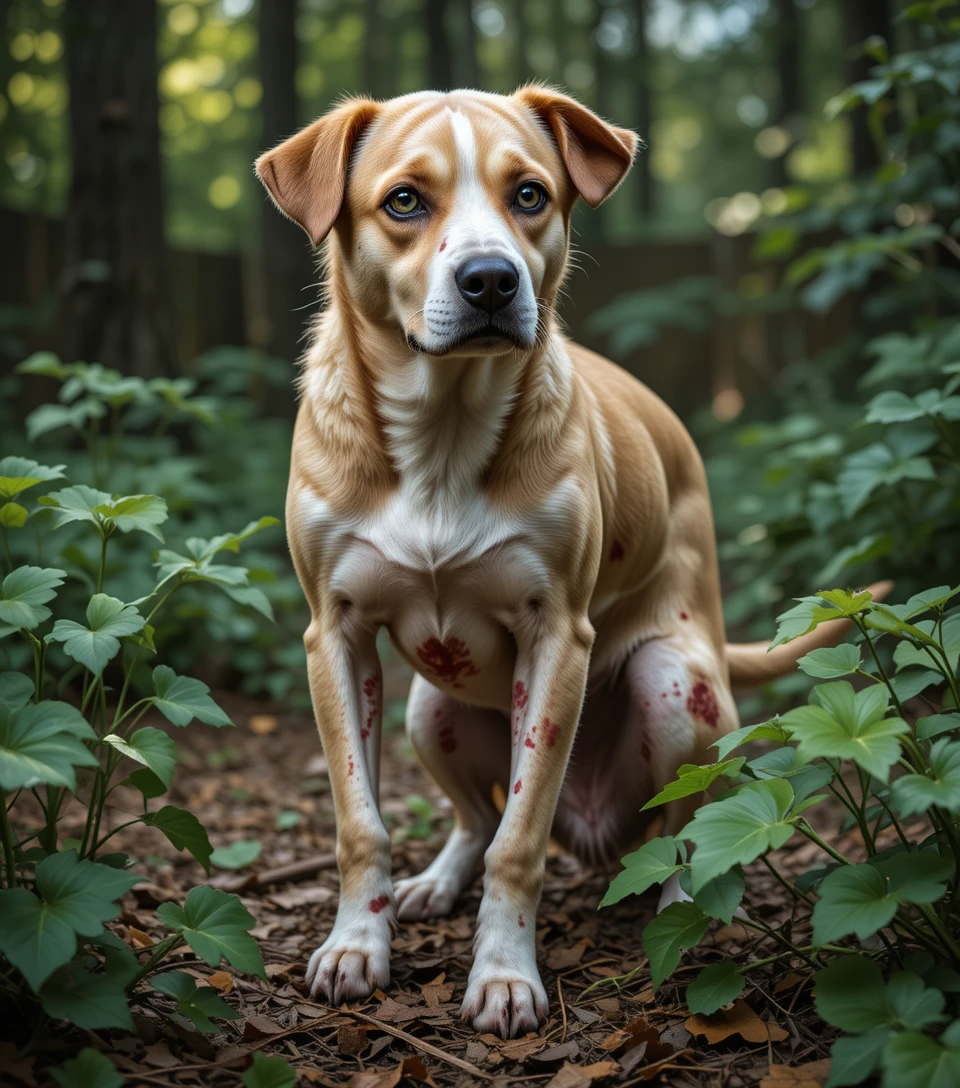Poison ivy is the stuff of nightmares for hikers and outdoor lovers — but what about your dog? Can your curious canine suffer from those same itchy, red rashes? The short answer is yes — dogs can get poison ivy, and the symptoms can be uncomfortable and even distressing if left untreated. This guide breaks down the scary signs to look out for, what to do if your dog is exposed, and how to keep them safe in the future.
🌿 What Is Poison Ivy?

Poison ivy (Toxicodendron radicans) is a common plant found across North America, often lurking in forests, parks, and even backyards. The plant contains urushiol, an oily sap that causes allergic skin reactions in humans — and can affect dogs too.
It typically grows as a low shrub or trailing vine and is easily identified by its classic “leaves of three” appearance. The real problem? Dogs don’t know to avoid it, and the oil can easily stick to their fur, skin, and paws.
🐾 Can Dogs Get Poison Ivy? The Truth
Yes, dogs can develop rashes and allergic reactions from poison ivy — especially if the urushiol oil makes contact with areas of the body that have little or no fur, such as:
- The belly
- Inner thighs
- Muzzle
- Ears
Their fur often provides a natural barrier, but it’s not full protection. Dogs may not react immediately, but hours after contact, symptoms can begin to appear.
⚠️ Scary Symptoms to Watch For
Here are some of the most common — and alarming — signs your dog may have come in contact with poison ivy:
- Red, irritated skin
- Excessive scratching or licking
- Raised bumps or rashes
- Blisters or oozing sores
- Swelling around the face or paws
- Restlessness or whining from discomfort
If left untreated, your dog may scratch so much that it breaks the skin, leading to secondary infections.
🧬 Is Poison Ivy Dangerous for All Dogs?

While any dog can be affected, some are more vulnerable than others:
- Short-haired breeds (like Boxers or Pit Bulls) have less protection
- Puppies have more sensitive skin
- Dogs with allergies or immune issues may have stronger reactions
Even long-haired dogs can experience symptoms if the oil transfers from fur to skin or is ingested during grooming.
🛁 What to Do If Your Dog Touches Poison Ivy
If you suspect your dog has come in contact with poison ivy, act fast:
- Wear gloves — You can get urushiol from your dog’s coat!
- Bathe your dog immediately using:
- Pet-safe shampoo
- Lukewarm water
- Optional: an oatmeal or medicated dog shampoo
- Do NOT use human creams or lotions unless approved by your vet
Avoid home remedies that could be toxic to dogs, like calamine lotion or hydrocortisone not made for pets.
🩺 When to Call the Vet
Contact your vet if your dog shows:
- Severe swelling or eye irritation
- Open sores or signs of infection
- Lethargy or loss of appetite
- Constant itching despite bathing
Your vet may recommend:
- Antihistamines
- Corticosteroids
- Topical dog-safe ointments
Never medicate your dog without professional advice — even common meds can be dangerous.
🔍 Poison Ivy or Something Else?
Poison ivy rashes can sometimes mimic:
- Flea bites
- Allergic dermatitis
- Mange
- Ringworm
A vet can help accurately diagnose the condition using skin scrapings or allergy testing.
🌼 How to Prevent Poison Ivy Exposure
Prevention is the best medicine. Here’s how to protect your pup:
- Stick to clear trails during hikes
- Learn to recognize and remove poison ivy from your yard
- Clean your dog’s paws and coat after walks
- Wash your clothes and gear if exposed
- Use protective gear for dogs during walks in wooded areas
🌿 Natural Remedies & Aftercare Tips
Once your dog is feeling better, here are a few tips for keeping their skin healthy:
- Use aloe vera gel (vet-approved) for soothing relief
- Apply coconut oil to dry patches (check with your vet first)
- Consider dog-specific anti-itch sprays
- Maintain regular grooming and flea prevention
- Offer an anti-inflammatory diet with omega-3 fatty acids
❓ 10 FAQs About Dogs and Poison Ivy
- Can dogs be allergic to poison ivy like humans?
Yes, but their reactions are typically milder due to their fur. Sensitive areas are more at risk. - What does poison ivy rash look like on dogs?
It may appear as red, bumpy, or blistered skin, often accompanied by scratching or licking. - How long does poison ivy last on a dog?
Mild cases clear up in a few days; severe reactions may last over a week with treatment. - Can poison ivy spread from a dog to a person?
Yes — urushiol can transfer from a dog’s coat to your skin, even if the dog doesn’t have symptoms. - What home remedies are safe for poison ivy on dogs?
Oatmeal baths, coconut oil, and vet-approved aloe are usually safe — but always check with your vet. - Should I take my dog to the vet for poison ivy?
If symptoms are moderate to severe, or persist beyond 48 hours, a vet visit is highly recommended. - Can dogs get poison oak or poison sumac too?
Yes — all three plants contain urushiol and can cause similar symptoms in dogs. - How can I tell if my dog was exposed to poison ivy?
Look for sudden itching, skin redness, or licking after time outdoors, especially in wooded areas. - Is it safe to use human creams on a dog’s rash?
No — many human creams contain ingredients toxic to dogs. Use vet-approved treatments only. - Are some dogs more prone to skin irritation than others?
Yes — short-haired breeds and dogs with allergies or sensitive skin are more at risk.

